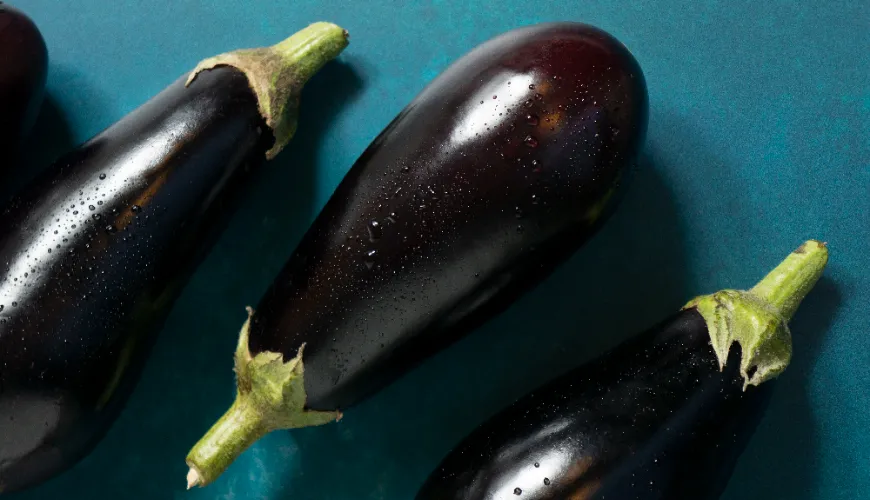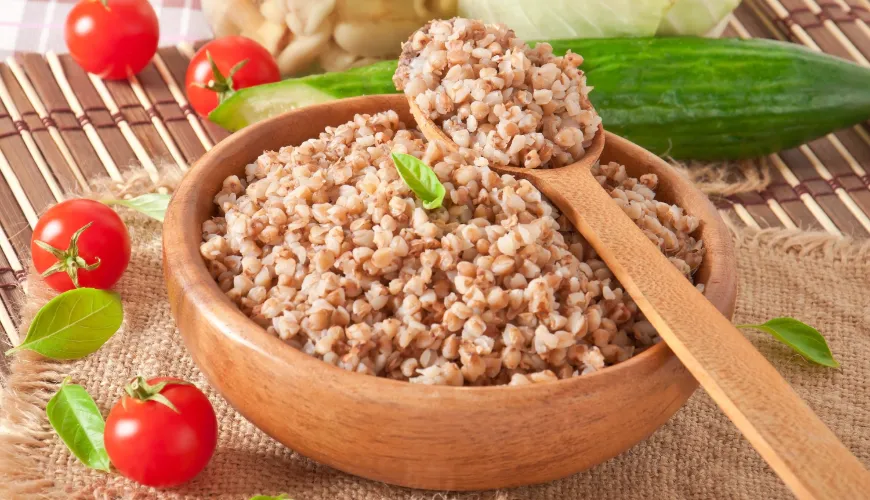
Practical Tips on How to Properly Prepare Eggplant

Practical Guide on How to Prepare Eggplant
Eggplant, also known as aubergine, is one of the most popular vegetables you can use in your kitchen. Its delicate, slightly sweet flavor and soft texture make it suitable for various uses in a wide range of dishes. But how do you prepare eggplant to retain all its advantages, flavor, and nutritional values? In this article, we'll look at several proven methods that will help you achieve perfect results, whether you're using eggplant in traditional Czech recipes or preparing exotic dishes.
How to Properly Cut Eggplant
The first step in preparing eggplant is cutting it correctly. Eggplant has a compact flesh that is easy to slice, but it's still important to pay attention to the shapes and sizes of the pieces you choose.
If you plan to grill or bake eggplant, the best choice is slices about one centimeter thick. Such slices cook well and retain their juiciness. If you plan to use eggplant in stews, sauces, or salads, it's recommended to cut it into smaller cubes or strips. Evenly cut pieces ensure that the eggplant cooks evenly while retaining its characteristic flavor and structure.
Removing Bitterness
Eggplant can naturally have a slightly bitter taste, caused by the presence of compounds called glycosides. While modern varieties of eggplant are often less bitter than those available in the past, it's still recommended not to skip this step if you want to achieve the best flavor.
One proven way to remove bitterness from eggplant is by salting it. After cutting the eggplant into desired shapes, lightly sprinkle it with salt on both sides and let it rest on a kitchen towel or in a colander for 20 to 30 minutes. Salt will draw out excess water from the eggplant, along with some bitterness. After this time, rinse the eggplant thoroughly under running water to remove excess salt and then pat it dry with a paper towel. This step is crucial if you plan to fry or grill the eggplant, as removing moisture will help achieve a crispy surface.
Baked Eggplant
Baking eggplant is one of the most popular methods for preparing this vegetable. Baked eggplant is soft, juicy, and has a slightly caramelized flavor, which is perfect as a base for various dishes, such as spreads, salads, or main courses.
To prepare baked eggplant, first preheat the oven to 200°C. Cut the eggplant into slices or halve it lengthwise if you want to bake it whole. Place the slices or halves on a baking sheet lined with parchment paper, brush with olive oil, and season to taste - for example, with salt, pepper, garlic, or herbs. Bake for approximately 20 to 30 minutes until the eggplant is soft and the surface is golden. The resulting baked eggplant can be served as a standalone dish or used as a base for preparing other dishes, such as the famous baba ganoush, which is popular worldwide.
Eggplant as a Meat Substitute in Traditional Dishes
Eggplant is a great alternative to meat in many traditional dishes. Thanks to its ability to absorb the flavors of spices and sauces, it fits well into dishes that usually feature strong flavors and rich textures.
One example of using eggplant as a meat substitute is in goulash. Eggplant cut into larger cubes can be stewed together with onions, peppers, and tomatoes, creating a rich and tasty base for the goulash sauce. This prepared goulash can be served with traditional sides like dumplings or bread.
Another option is stuffed eggplant with various fillings, such as a mixture of grains, legumes, vegetables, and herbs. The eggplant can be pre-baked to soften, then filled with the prepared mixture and baked again. This dish is not only delicious but also visually appealing and can become the star of your table at festive occasions.
Fried Eggplant
Frying is another great way to prepare eggplant. When prepared correctly, fried eggplant acquires a deliciously crispy crust while its interior remains soft and juicy.
The key to success when frying eggplant is sufficiently hot oil. Cut the eggplant into thin slices or cubes and coat them before frying in a mixture of flour or breadcrumbs, which will give it a crispy texture. Fry the eggplant in a deep pan with enough oil until golden and crispy. The finished fried eggplant can be served as a side dish or incorporated into pasta, risotto, or other main dishes.
Preparing eggplant is an art that offers a wide range of possibilities for creativity in the kitchen. Whether you prefer baking, frying, grilling, or stewing, eggplant always provides exceptional flavor and texture that every food lover will appreciate.
It's important not only to prepare eggplant correctly but also to select it carefully. Choose eggplant with shiny, firm skin and no blemishes to ensure the best result. We hope this guide has provided you with useful tips on how to prepare eggplant and that you look forward to new culinary experiences this exceptional vegetable will bring.

